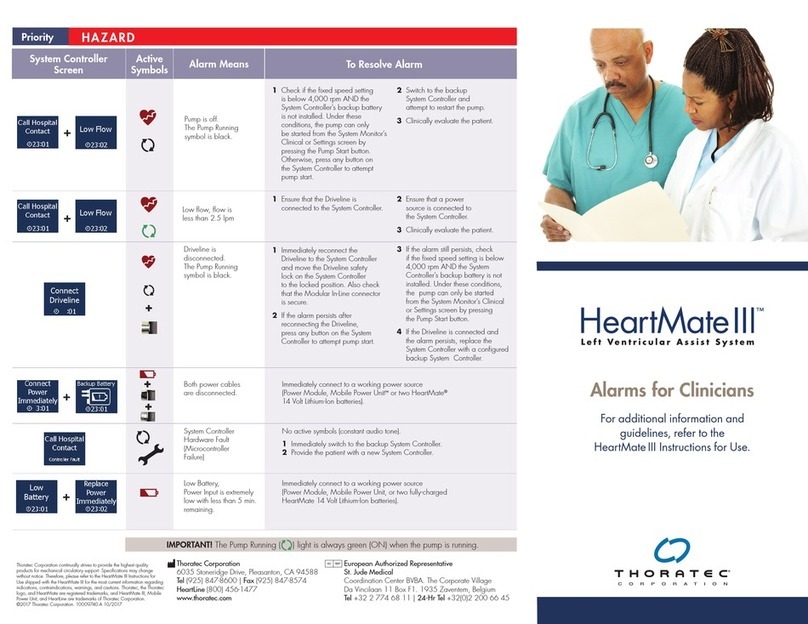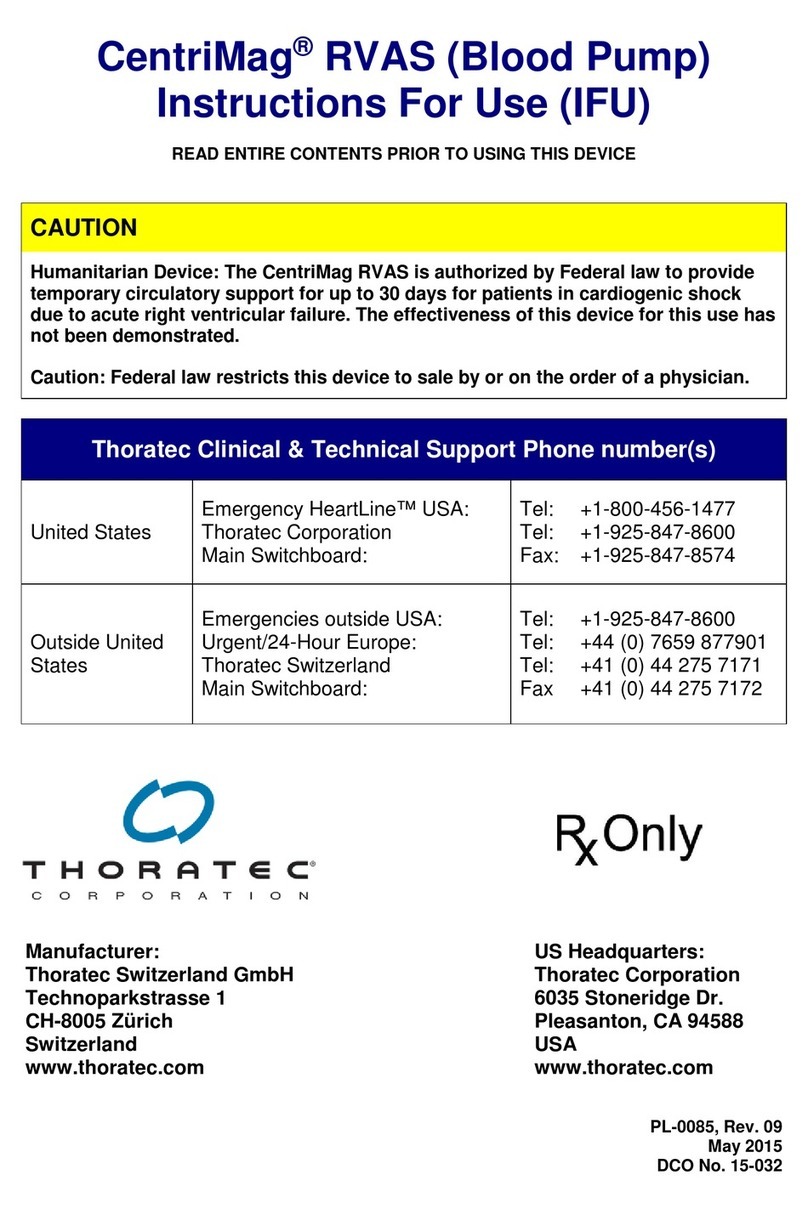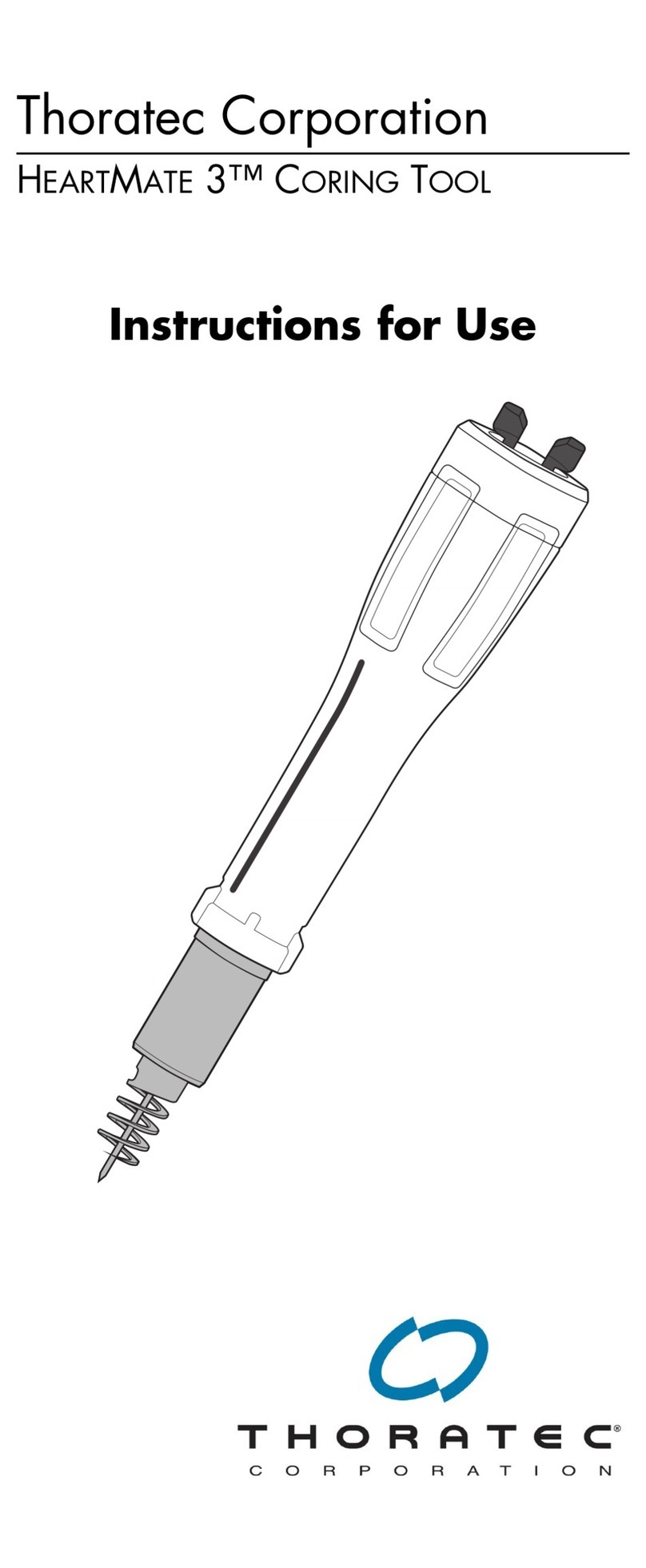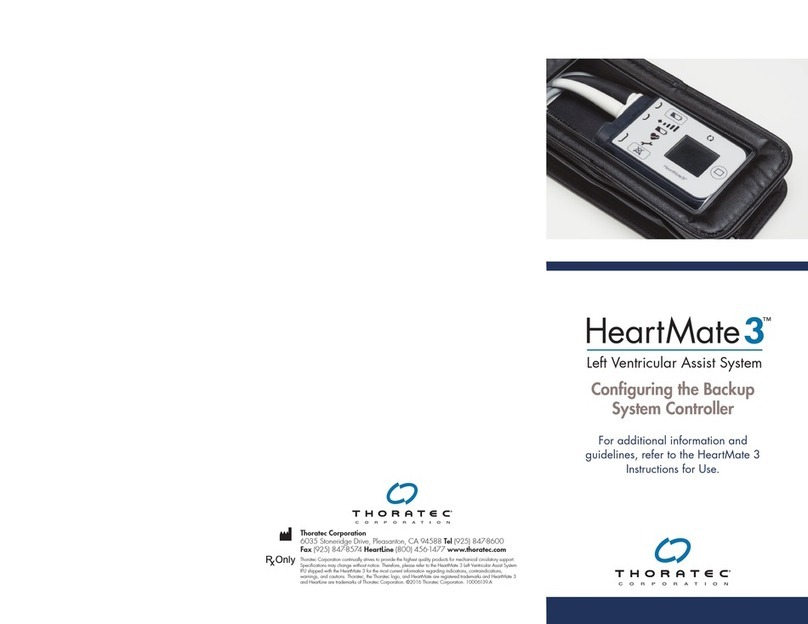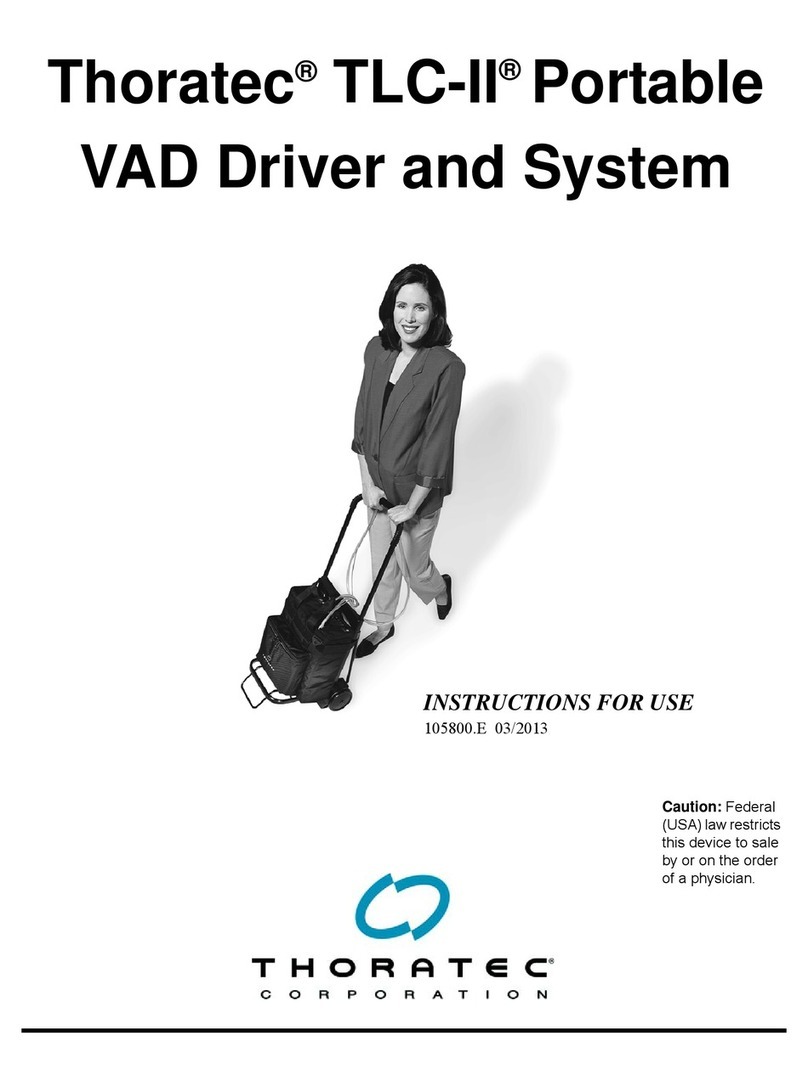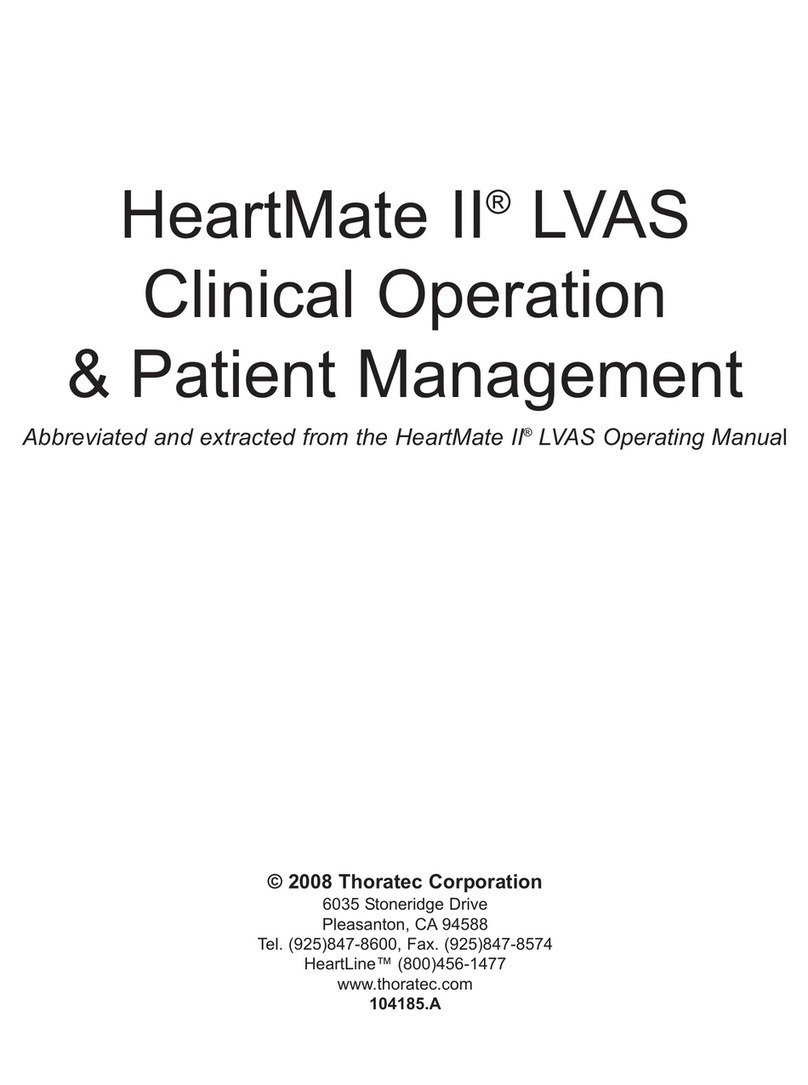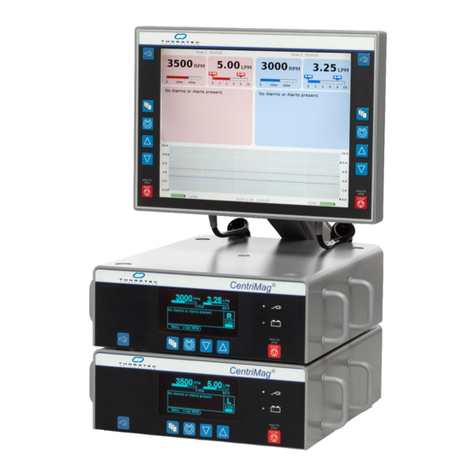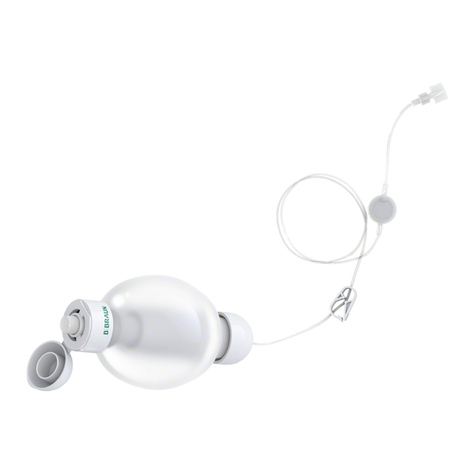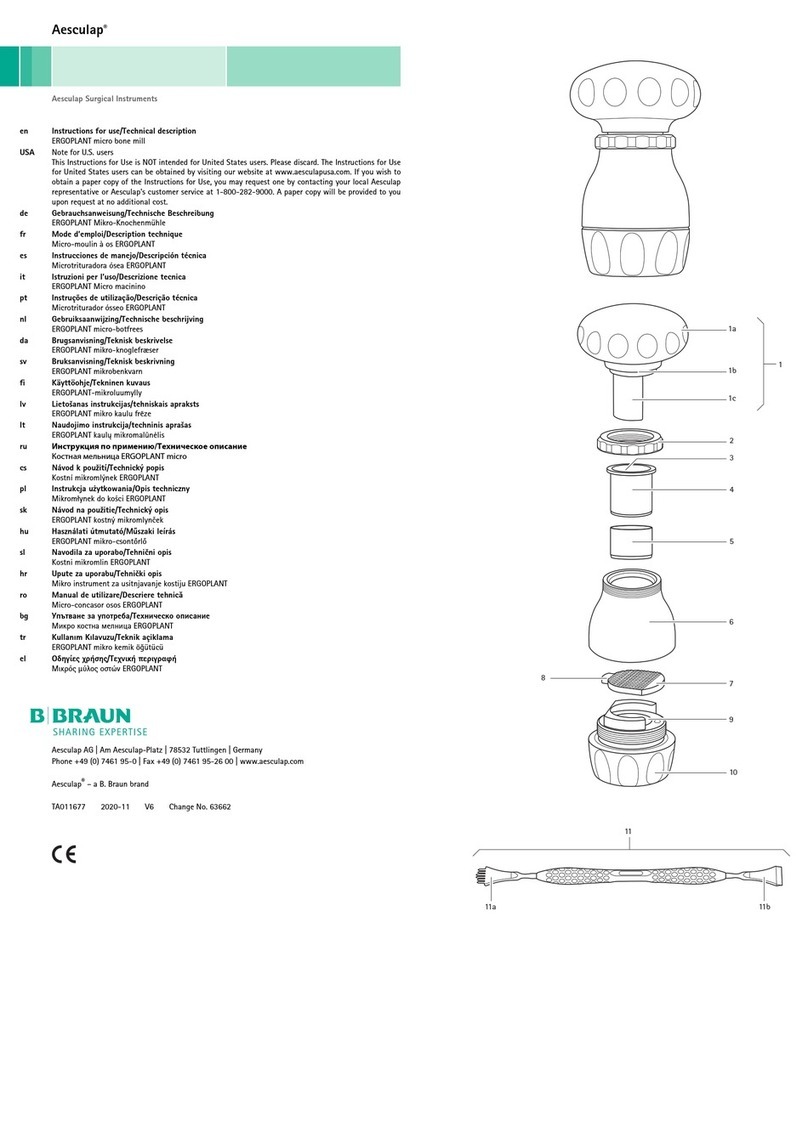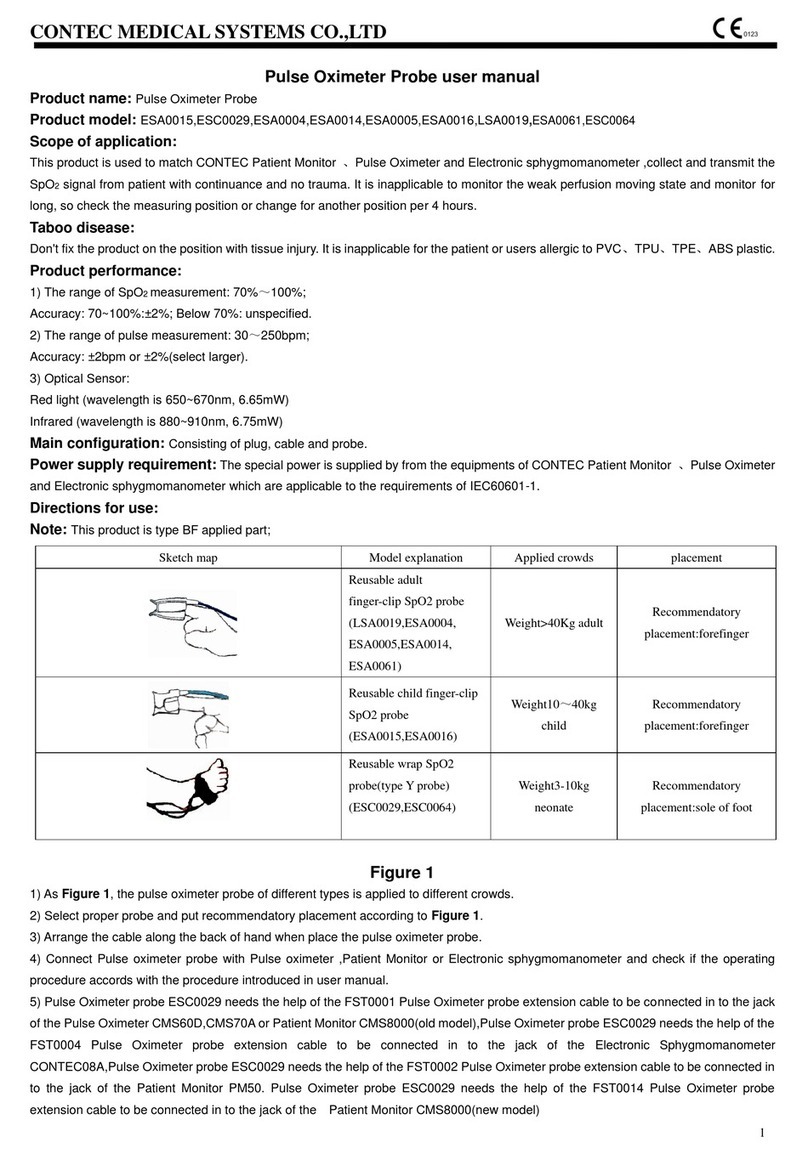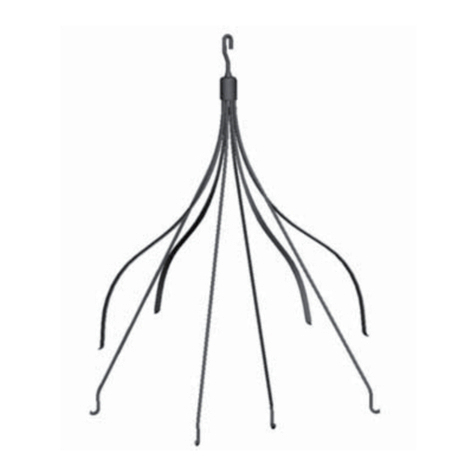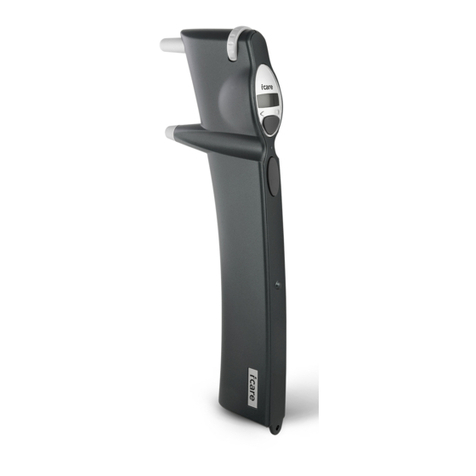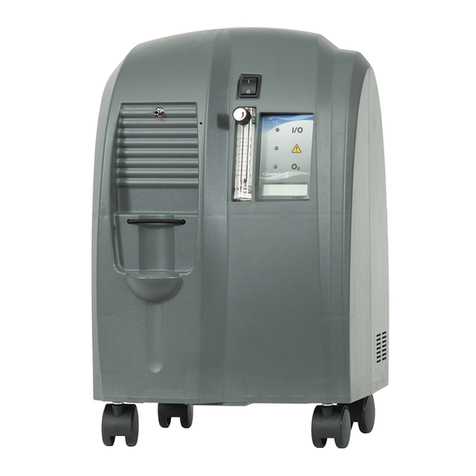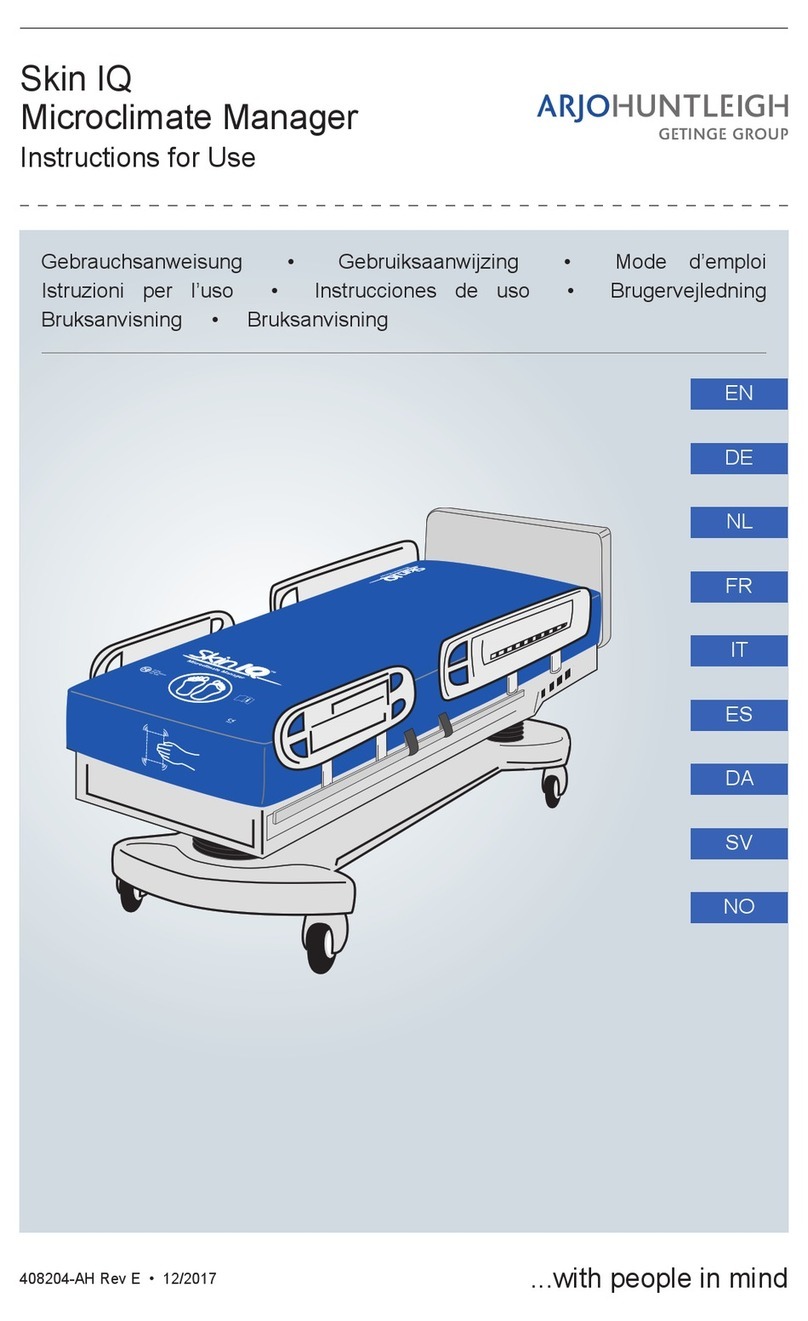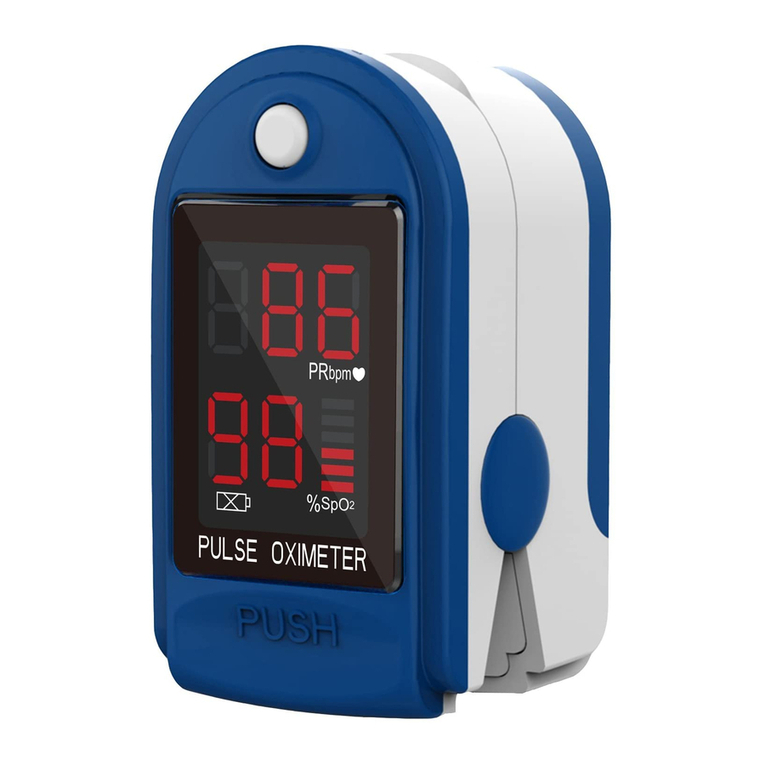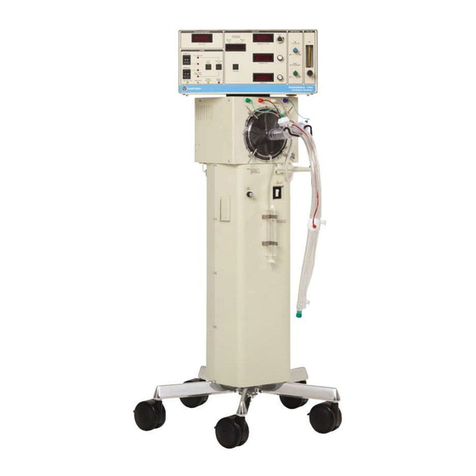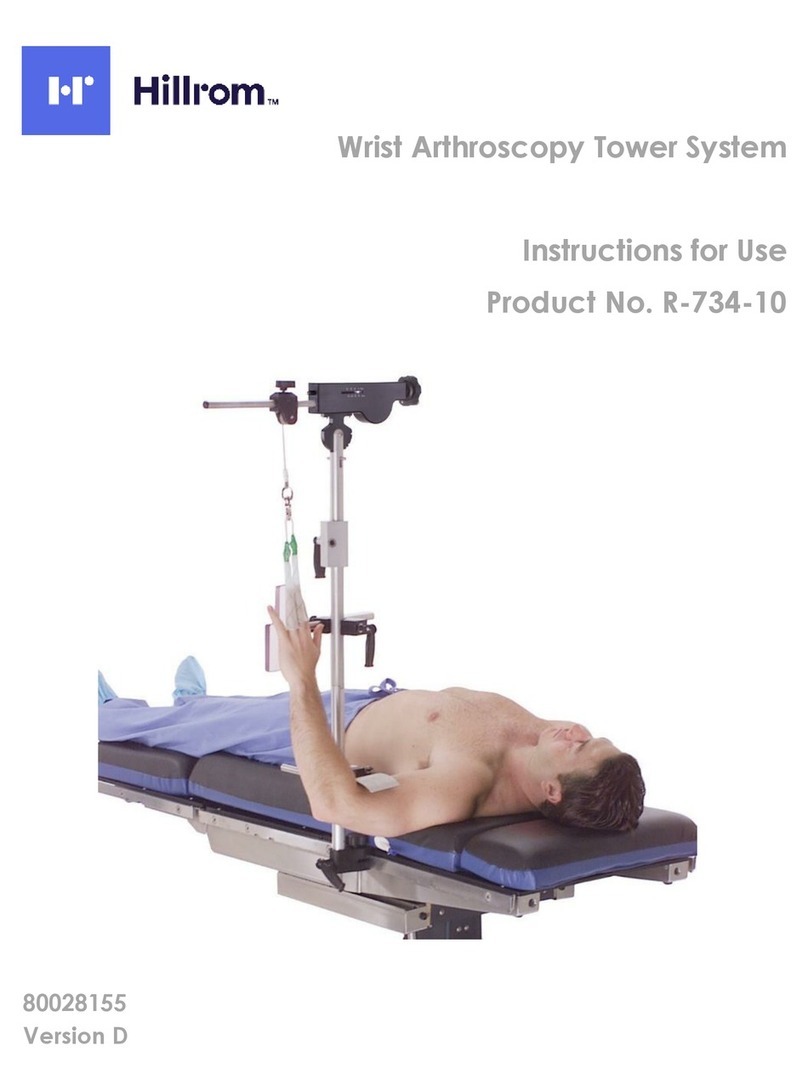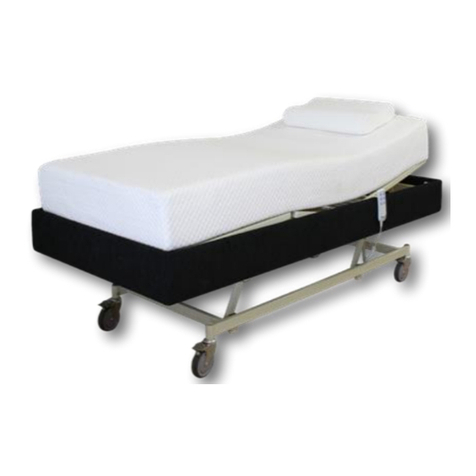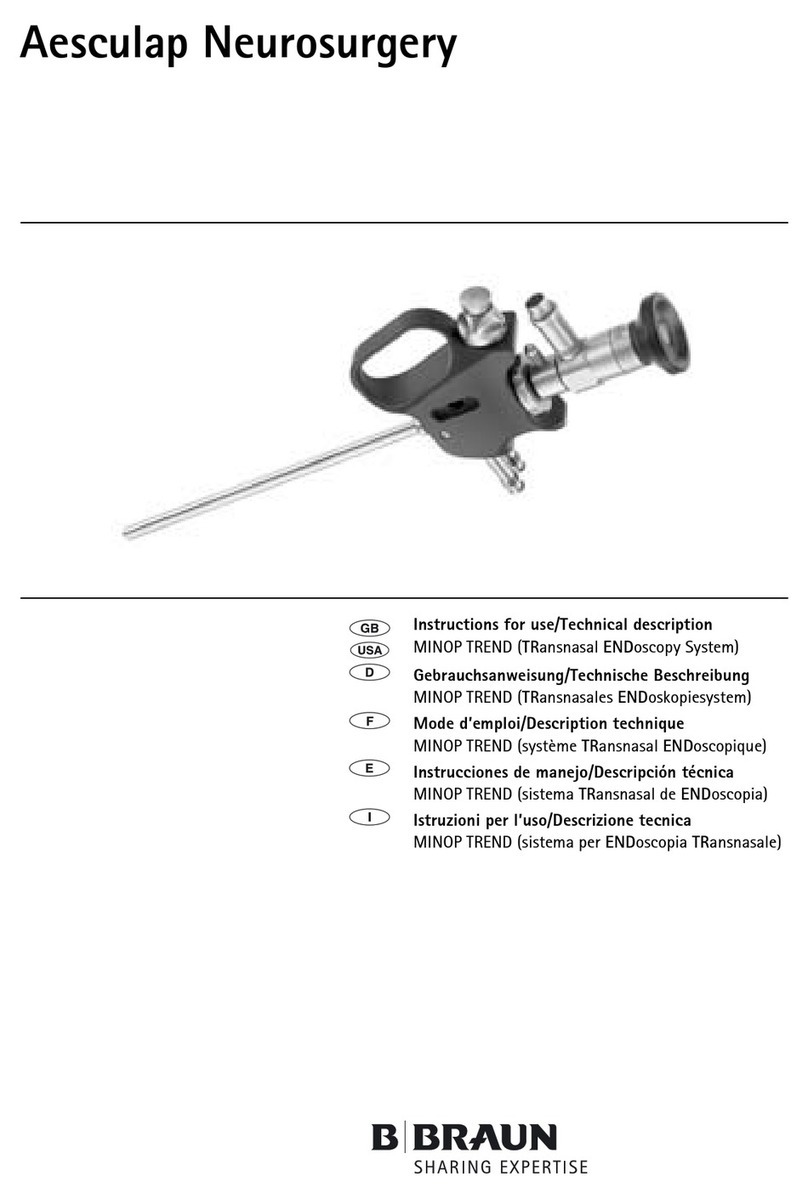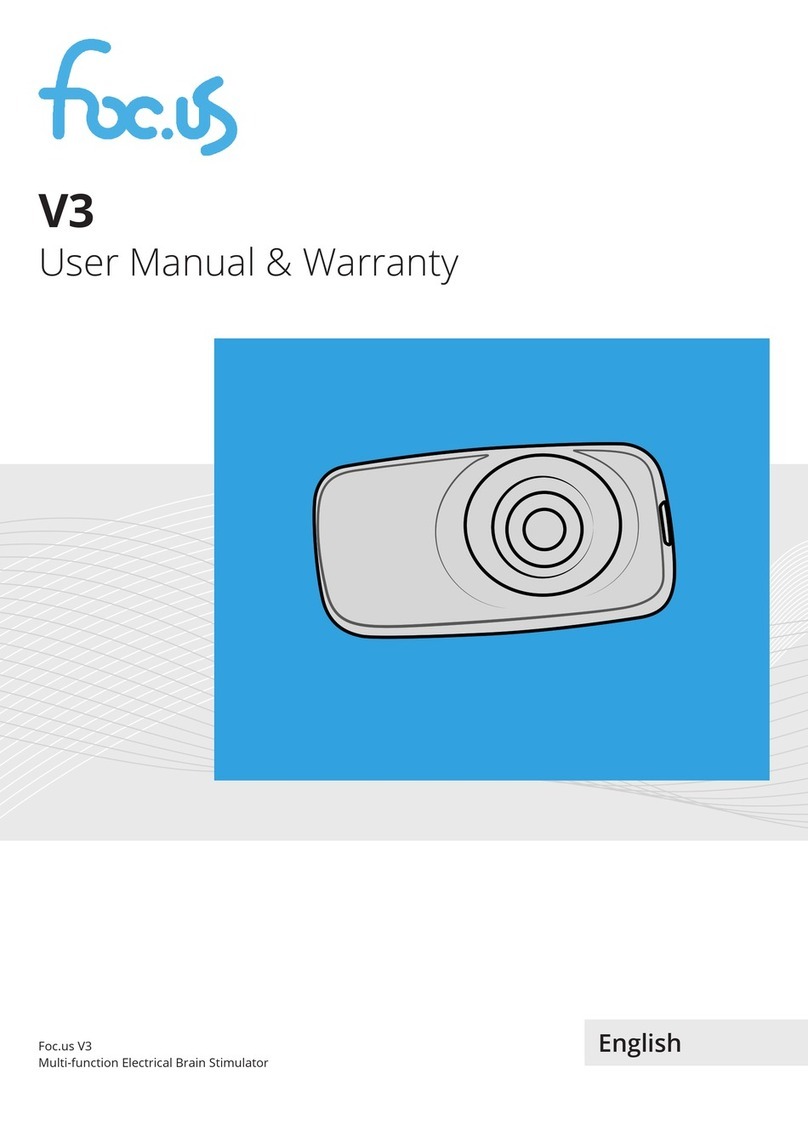
PediMag®Blood Pump IFU Page 3 of 8
© 2013 Thoratec Switzerland GmbH – Document No PL-0112, Rev 04 (October 2013)
3. Possible side effects include, but are not limited
to: infection, mechanical failure, hemolysis, end
organ dysfunction, neurologic dysfunction,
bleeding, and embolic phenomena. These are
potential side effects with all mechanical
circulatory support systems.
4. Ensure that the PediMag Blood Pump and circuit
have been debubbled and primed properly prior
to use to minimize the risk of air entry to the
patient. The use of an arterial filter is
recommended.
5. Massive air entry into the PediMag Blood Pump
will cause the Blood Pump to deprime and blood
flow to stop. Clamp the outlet tubing and stop the
Blood Pump and remove air prior to resuming
circulation.
6. Do not expose the PediMag Blood Pump to
chemical agents as they may affect the integrity
of this device. Anesthesia solutions such as
forane are known to degrade polycarbonate
plastics.
7. To prevent backflow of the patient’s blood when
the Blood Pump outlet tubing is open, establish
and maintain a minimum pump speed that
overcomes line and patient resistance. Failure to
do this could allow retrograde flow and limit
arterial pressure.
8. A Blood Pump stoppage will create a reverse
flow shunt through the Blood Pump, as well as
limit the body’s ability to maintain adequate
arterial pressure. If the Blood Pump is stopped,
clamp the outlet tubing from the Blood Pump to
prevent a low flow, low pressure, and reverse
flow condition. The tubing clamp must be
removed before returning to normal pumping
activity.
9. It is intended that systemic anticoagulation be
utilized while this device is in use.
Anticoagulation levels should be determined by
the physician based on risks and benefits to the
patient.
10. The PediMag Blood Pump is designed to be
operated only with the CentriMag drive Console.
There are no safety or performance data known
to Thoratec that establish compatibility of any
other manufacturer’s devices or components to
the PediMag Blood Pump.
11. Potential risk to the patient should be evaluated
prior to changing a PediMag Blood Pump.
12. Frequent patient and device monitoring is
recommended.
13. Do not use the PediMag Blood Pump if the “Use
Before” Date on the package has past or
expired.
14. Do not operate the PediMag Blood Pump in the
absence of forward flow. The temperature within
the Blood Pump will rise and increased cellular
damage and clotting may result.
15. The PediMag Blood Pump must be handled in
an aseptic manner until primed and connected to
a closed tubing circuit.
16. Do not operate the PediMag Blood Pump with its
inlet tubing clamped as a negative pressure will
be generated in the Blood Pump and air bubbles
may be formed in the priming fluid or blood.
17. Monitor the patient’s hemodynamics and the
Console Flow display to insure adequate blood
volume for the inlet cannula position, Blood
Pump RPM, and desired flow. Increase Blood
Pump RPM in small increments to minimize the
risk of exceeding the available blood volume and
causing inlet cannula obstruction, suction,
outgassing, and/or cavitation.
18. As with all continuous flow pumps, operating at
too high a speed can result in negative pressure
at the inlet which can lead to collapse of the
ventricle or blood vessels, inlet cannula
obstruction, inspiration of air, outgassing,
cavitation and increased risk of embolism.
Always operate the system at the lowest speed
consistent with the volume of blood available to
be pumped and clinically acceptable circulatory
support.
19. The PediMag Blood Pump contains a magnet.
To avoid injury, keep all sharp metal objects and
instruments at least six inches away for the
Blood Pump. Do not remove the PediMag Blood
Pump from its inner tray until ready to assemble
the circuit and insert pump into the motor
receptacle.
20. If PediMag Blood Pump operation is ever halted
or flow reduced, consideration should be given to
monitoring and adjustment of the patient’s
anticoagulation status.
21. Do not restart the PediMag Blood Pump if the
Blood Pump has been stopped for more than 5
minutes without adequate anticoagulation, as the
risk of thromboembolism is increased after blood
has remained stagnant in the Blood Pump,
extracorporeal circuit, and connectors.
22. Monitor the pump and tubing for air because the
PediMag Blood Pump, similar to other centrifugal
pumps, will pump air. Immediately clamp Pump
outlet tubing if air enters the PediMag Blood
Pump as gaseous emboli may be introduced into








